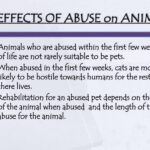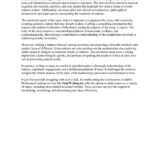Animal cruelty remains a deeply contentious issue within legal frameworks, sparking fervent debates on whether it should be addressed through criminal law or civil law. The dual pathways of these legal systems offer different implications for how society perceives and reacts to the maltreatment of animals. Understanding this distinction not only illuminates the nature of animal cruelty as a legal issue but also prompts a deeper reflection on humanity’s ethical obligations toward non-human beings.
The legal categorization of animal cruelty often begins with an examination of the specific statutes and regulations that govern the treatment of animals. In the realm of criminal law, animal cruelty is commonly defined as the willful and malicious infliction of harm upon animals, encompassing acts such as beating, torturing, or neglecting to provide adequate care. Criminal statutes aim to punish offenders, reflecting society’s condemnation of such behavior. Punitive measures can include fines, imprisonment, or community service, depending on the severity of the offense.
Conversely, civil law addresses animal cruelty through a different lens, fundamentally rooted in the pursuit of compensatory justice for the victims and their guardians. In civil cases, individuals or organizations can seek damages for harm caused to animals by negligent or intentional actions of others. This can involve a range of issues, including recovery for veterinary expenses, loss of companionship, and even psychological trauma resulting from witnessing animal suffering.
Throughout the history of legal approach to animal welfare, a notable observation arises: the predominance of criminal codes over civil provisions. This can be viewed through the lens of societal values, where acts that blatantly violate ethical standards elicit a moral outrage that demands a criminal response. Society tends to view egregious acts of violence against animals—be they in the form of dog fighting, puppy mills, or abandonment—as moral aberrations that warrant punitive measures. The criminalization of such behaviors serves not only to penalize the offenders but also to reinforce societal norms against cruelty, thus promoting a cultural shift toward more humane treatment of animals.
In contrast, one may ask: why does civil law play a lesser role in the discourse around animal cruelty? There are several interwoven reasons that underpin this discrepancy. Historically, the legal system has often granted animals a status akin to property, thereby limiting the scope for meaningful civil redress. This perspective inherently affects how laws are structured and applied. As property, animals are often relegated to the background in legal disputes, their suffering overshadowed by the rights of their human guardians.
This property-based view has recently encountered challenges, igniting a dialogue about reform. Advocates argue for a paradigm shift that recognizes animals as sentient beings deserving of protection, rather than mere objects with monetary value. The burgeoning field of animal rights law is emblematic of this shift in perspective. Legal scholars and activists are increasingly pushing for laws that not only penalize abuse but also affirm animals’ intrinsic rights, a move that could potentiate the civil law’s role in combating cruelty.
The growing recognition of animals as sentient creatures necessitates re-evaluating the existing legal frameworks. In this context, the question arises: can a more integrated approach be established, one that transcends the binary categorization of threats against animals? Some jurisdictions are exploring hybrid models that incorporate both criminal and civil remedies. These frameworks may provide comprehensive protection by allowing for punitive measures while simultaneously facilitating civil claims for damages. Such an initiative could forge a more robust response to the multifaceted issue of animal cruelty.
Moreover, the societal implications of addressing animal cruelty through both legal avenues are profound. Integration fosters a culture of accountability and ethical consideration, whereby individuals are cognizant of the consequences of their actions toward animals. When communities witness meaningful legal repercussion for cruelty, it can alter public perception and discourage prospective offenders. This detente could reverberate beyond individual cases, influencing broader societal attitudes toward the treatment of animals and enhancing advocacy efforts aimed at prevention.
In addition to legal reform, there is an inherent need for education and awareness campaigns. These initiatives can galvanize public interest and foster an environment where animal welfare becomes a shared societal responsibility. By promoting understanding of what constitutes cruelty and the legal avenues available for redress, communities can work collaboratively to ensure that animal welfare is prioritized. Schools, non-profits, and government agencies should partner to develop educational programs that illuminate the severity of animal cruelty and the importance of humane treatment.
In conclusion, the distinction between criminal law and civil law concerning animal cruelty is emblematic of broader societal values and moral truths. While criminal law provides necessary deterrence against egregious acts of animal abuse, civil law offers an avenue for restitution and acknowledgment of suffering. For a truly humane society, it is imperative that the intricate relationship between these two legal frameworks is recognized and harmonized. Engaging in dialogues around reform, education, and advocacy may ultimately enhance the way communities perceive and address animal cruelty, fostering a future where animals are afforded the dignity and respect they intrinsically deserve.







